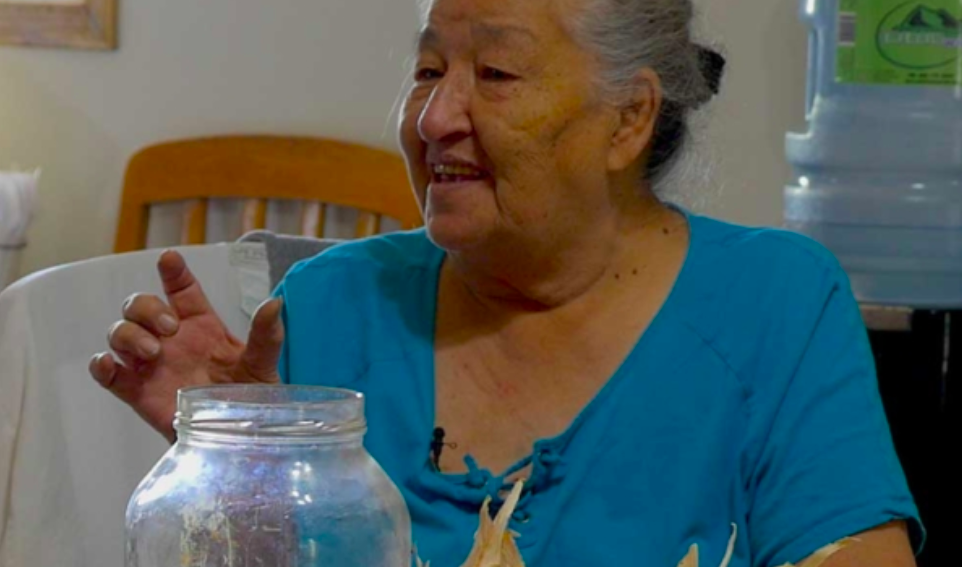Food Sovereignty in Canada

By Esprit Farmer
Aside from supporting life, food holds great cultural and traditional significance. It unites communities and it has the power to create common ground. Food, where it comes from, and how we consume it can be the biggest fight for freedom.
We can examine this further using an example from an important food made by Indigenous people in Canada. Pemmican is made of berries, bison meat, and any local nuts or grains. Its first recorded use is from the Athabasca region First Nations, who shared it with colonizers, alongside with Metis people who sold it at trading posts. Many different First Nations communities have similar versions, often adapted to their local wild berries. It is a staple of traditional Indigenous diets, and it represents something sacred: food security– and more importantly, food sovereignty.

Food Security vs Food Sovereignty
Food security is the concept that individuals, communities, and societies have consistent and secure access to food. Although there is access to food, the food itself may not be nutritious. Oftentimes, ‘food security’ may just mean imported foods that are mass produced and cheap, not the most fresh or the most nutritious.
Food sovereignty aims to redefine how we eat. In order to be food-secure, communities must create a closed-loop food system. This means eating locally, which supports small-scale community businesses. It also emphasizes using agro-ecology and traditional techniques to bolster biodiversity and land quality.
The benefits are many: eating locally has a low carbon footprint, and acts as a safety net for communities with tenuous grocery access. There is also a massive social impact; eating locally empowers the community, and can strengthen the community’s culture and tie to the land.
The importance of food sovereignty is wide-reaching, and it plays an integral role in every aspect of our lives. Food insecurity (in other words, not having enough access to nutritious food) affects over four million Canadians a year. It is linked to health issues, environmental problems, and more which not only hurts Canadians but also costs the government.
Moreover, food insecurity disproportionately affects Indigenous Canadians: food insecurity is twice as high in their communities, causing them to be more susceptible to these health and environmental problems.
The Importance of Food Sovereignty in Canada
Applying this definition of food sovereignty to the pemmican example, in Ann Verrall’s docuseries The Beacon Project, Elder Lorraine Yuzicapi illustrates what pemmican means to her community.
Her son raises and slaughters the bison, and the black currant berries come from their land. The pemmican recipe was passed down to Yuzicapi from her grandmother. After she makes the pemmican, it is shared with her whole community. This is food sovereignty: it is local, it is self-sufficient, and it empowers the community. On top of this, it keeps tradition alive and strengthens the community’s connection to nature.
“We were told by our great-great-grandmother that all our foods are medicine because the animals eat the grasses, the plants, and that’s all medicine. And we only take what we need.”
Yuzicapi explains the deeper significance of food in her culture. Fostering a relationship with the earth benefits everyone, humans and nature alike.



Food Sovereignty and Sustainability
Food sovereignty is incredibly important from an environmental sustainability perspective. Did you know that Saskatchewan is a massive producer of lentils? However, lentils are not a part of the typical Saskatchewan diet, and the majority of lentils produced here are exported.
This has a huge carbon footprint: one that would diminish if more lentils were adopted into our diet. Eating local food reduces your carbon footprint because that food does not have to travel as far. This also means fresher food, and closer ties to the surrounding land.
In regards to sustainability, there is also the consideration of how the food is produced. Large-scale, monocrop farms rely heavily on pesticides. Pesticides decrease soil quality and biodiversity, and are linked to cancer and other health defects.
In contrast, small-scale farms typically employ agro-ecology. This method focuses on hardy plants that are adapted to the soil and climate. Moreover, it encourages crop rotation and nitrogen-fixers to rejuvenate the soil.
Sustainable food sovereignty in Saskatchewan would mean citizens supporting their local growers, like the lentil farmers. This is not only healthier, but it supports the Saskatchewan economy and the environment.
What can WE do to Foster Food Sovereignty?
CPAWS SK is working hard to increase food sovereignty in Saskatchewan through bison integration on reserves. This is seen in the Sturgeon Lake First Nation where bison have been introduced both for food and for land remediation.
This is led by the Indigenous Guardians Program, which is a group of community youth that are responsible for overseeing the bison integration.
In order to guarantee food sovereignty on First Nation reserves, it is necessary to safeguard the food they rely on. This is a key motivator in the protection of caribou habitat in the Athabasca basin. The protection is led by Ya’ thi Néné Lands and Resources and the communities that they represent; communities who hold a cultural connection to the caribou and hunt them for sustenance. This ownership of the protection process ensures not only sustainable caribou populations, but also a sustainable food source for the community.
Resources:
